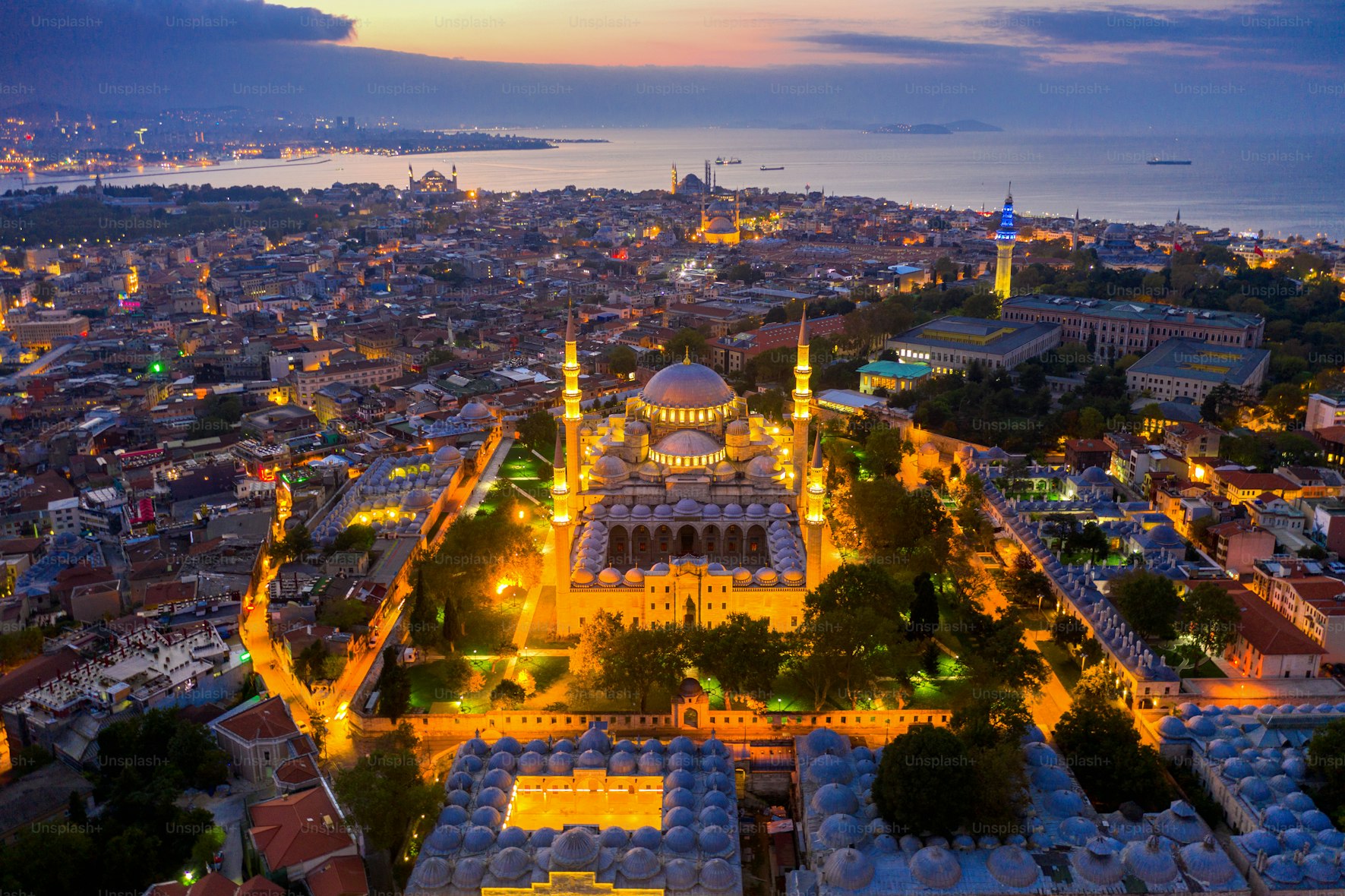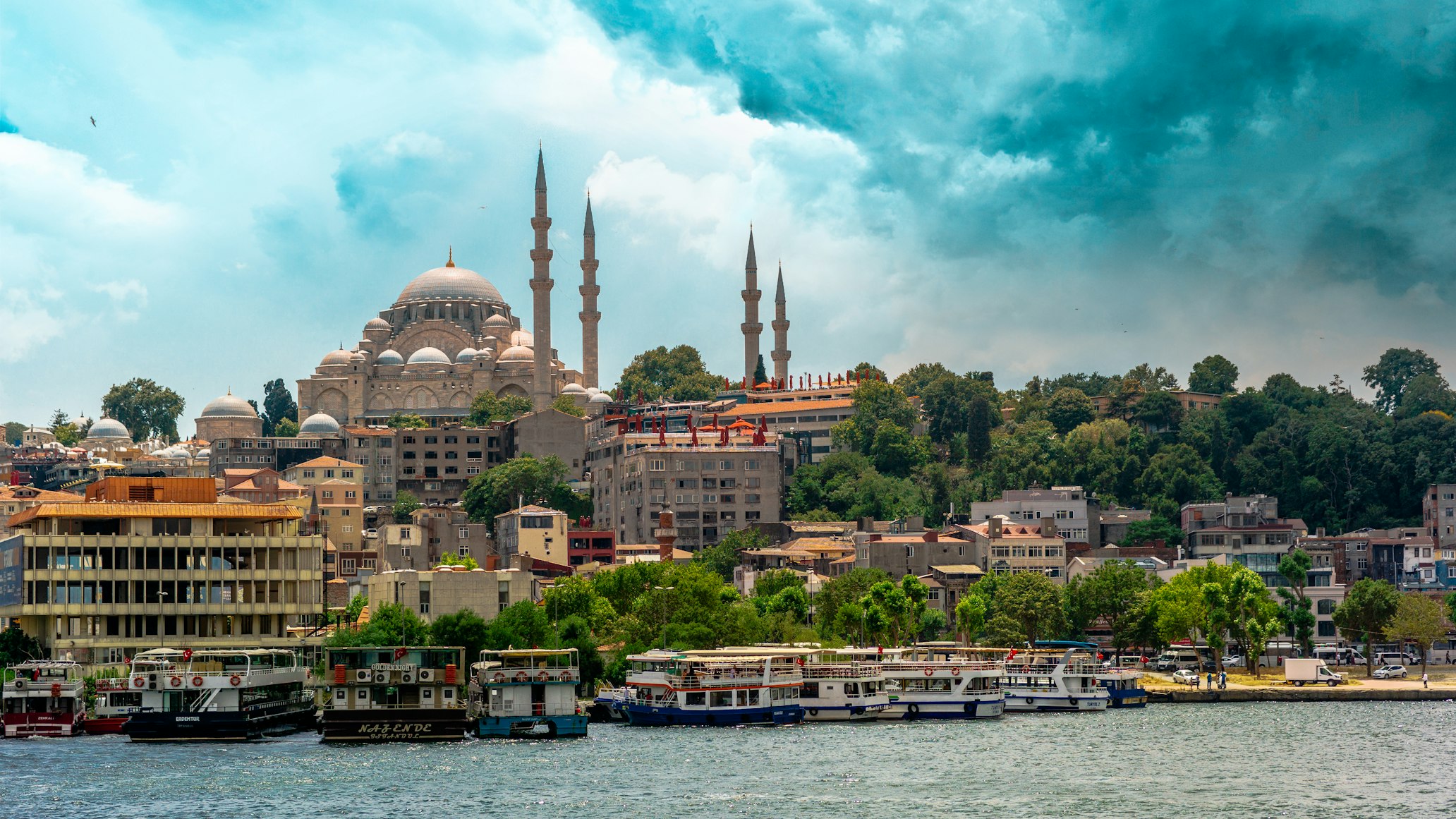Suleymaniye Mosque, located in Istanbul, Turkey, is one of the most iconic and impressive landmarks of the city. It was built in the 16th century during the reign of Sultan Suleiman the Magnificent, one of the greatest Ottoman emperors. The mosque is a masterpiece of Ottoman architecture, designed by the famous architect Mimar Sinan, also known as Sinan the Great.
History
The construction of Suleymaniye Mosque started in 1550 and was completed in 1557. The mosque was built to commemorate Sultan Suleiman’s victory over the Hungarian Kingdom and the capture of Belgrade in 1521. The mosque complex also includes a madrasa (Islamic school), a hospital, a caravanserai (a roadside inn), and a hamam (Turkish bath). The complex was designed to serve as a social and cultural center for the community.
Architecture
The mosque is built in the classical Ottoman style, which was developed during the 15th and 16th centuries. It is constructed with white marble and brick and is characterized by its massive size, large domes, and tall minarets. The central dome of the mosque has a diameter of 27 meters and is supported by four enormous pillars. The mosque has two smaller domes on either side of the central dome, and two semidomes on the east and west sides. The interior of the mosque is adorned with intricate calligraphy, stained-glass windows, and beautiful tilework.

Interior Design
The interior of the Suleymaniye Mosque is characterized by its grandeur and its use of intricate design elements. The mosque’s central dome, which rises to a height of 47 meters, is supported by four semi-domes and a series of arches and columns. The dome is adorned with intricate calligraphy and tilework, as well as with windows that allow natural light to filter into the mosque’s interior.
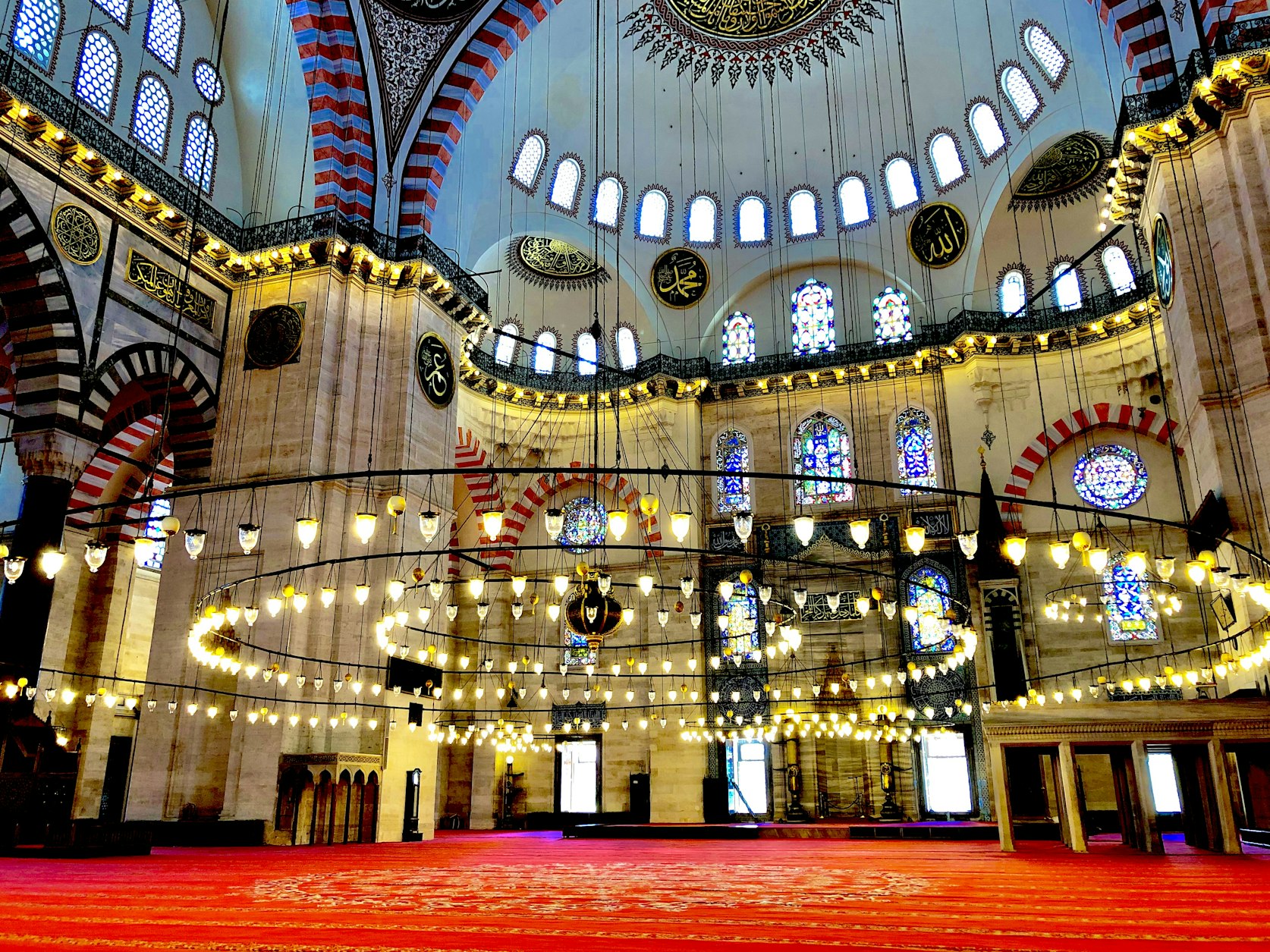
The mosque’s walls are covered with intricate tilework, featuring floral and geometric designs in a variety of colors. The mihrab, which indicates the direction of Mecca and is used for prayer, is made of carved marble and is decorated with gold leaf and calligraphy. The mosque’s minbar, or pulpit, is also made of marble and is decorated with intricate designs and calligraphy.
The mosque’s interior also features several chandeliers, which are made of crystal and brass and are suspended from the ceiling. The chandeliers were added to the mosque in the 19th century and were a gift from Queen Victoria of England.
Cultural Significance
Suleymaniye Mosque is not only a beautiful example of Ottoman architecture, but it is also an important cultural landmark for the Turkish people. The mosque has played a significant role in the religious and cultural life of Istanbul for centuries. It is a symbol of the Ottoman Empire’s power and grandeur and continues to serve as a place of worship and community gathering.
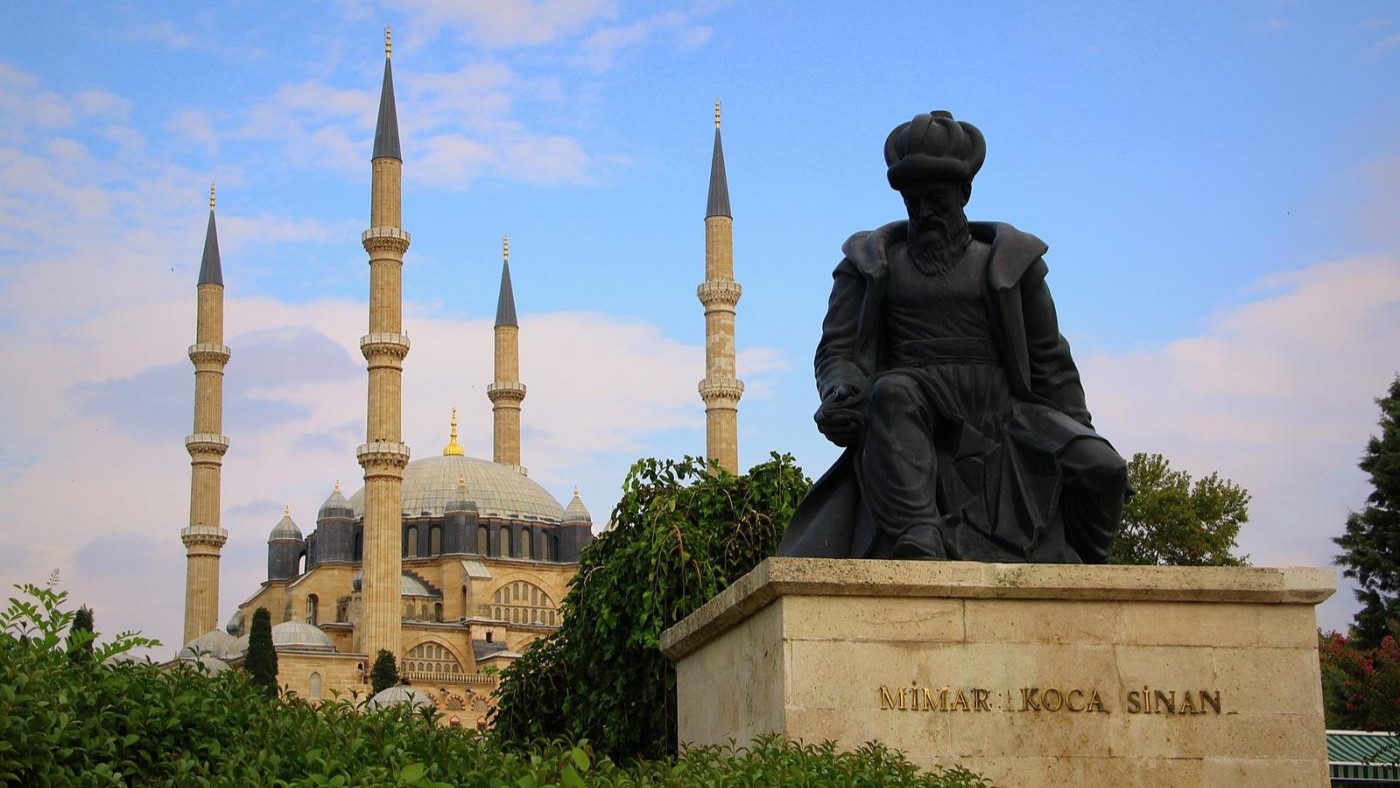
Sinan the Great
Suleymaniye Mosque was designed by Mimar Sinan, one of the greatest architects in the history of the Ottoman Empire. Sinan was born in 1489 in Kayseri, Turkey, and served as the chief architect of the Ottoman Empire for almost 50 years. He designed over 300 buildings, including mosques, schools, hospitals, and palaces. His architectural style combined classical Ottoman elements with new innovations, creating a unique and impressive style that defined Ottoman architecture for centuries.
Interesting Anecdotes
- The mosque’s construction provided employment for many people, and it is said that the laborers were paid in gold coins from the treasury. This was a significant expense for the Ottoman Empire, but it also helped to ensure that the construction was completed quickly and efficiently.
- The mosque complex also includes a hospital, which was a revolutionary concept at the time. The hospital provided medical care to people of all backgrounds and was considered to be one of the best in the world. The hospital was equipped with modern medical instruments and was staffed by highly skilled doctors and nurses.
- The mosque has survived several earthquakes over the centuries, but it was severely damaged in the earthquake of 1766. The mosque was rebuilt and restored over several years, and the restoration was overseen by the famous architect Mehmed Tahir Ağa.
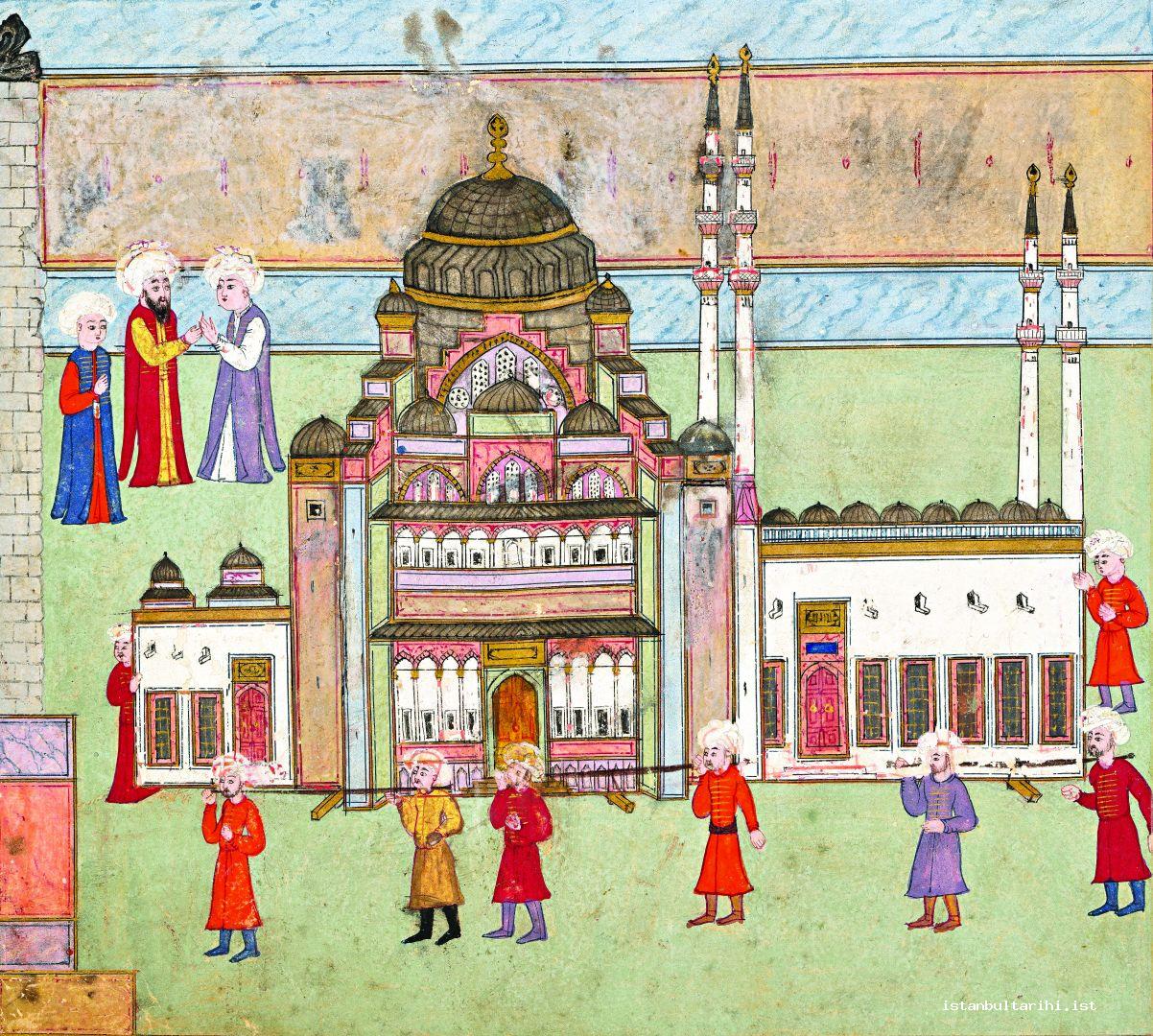
- During the 19th century, the mosque was used as a barracks for the Ottoman military. The mosque’s furnishings were removed, and the mosque was used as a stable for the soldiers’ horses. This caused significant damage to the mosque’s interior, and it took several years to restore it to its former glory.
- Suleymaniye Mosque has played an important role in Turkish history and culture. It was used as a location for important events, such as the coronation of Ottoman sultans, and it has been featured in many works of literature and art. The mosque’s cultural significance has made it a popular tourist destination, and it continues to serve as a symbol of Istanbul’s rich cultural heritage.

Internet’s Burning Questions
Why is the Suleymaniye Mosque important?
The Suleymaniye Mosque is considered one of the most important works of Ottoman architecture and is widely regarded as the masterpiece of the Ottoman architect, Mimar Sinan. It was commissioned by Sultan Suleiman the Magnificent in the 16th century and served as a symbol of the Ottoman Empire’s power and wealth. The mosque complex includes a hospital, school, library, and several other buildings, making it a significant example of Ottoman social and cultural architecture. It also represents the Islamic faith and its role in Ottoman society.
Why does the Suleymaniye Mosque look like the Hagia Sophia?
The Suleymaniye Mosque was designed by Mimar Sinan, who was heavily influenced by the Byzantine architecture of the Hagia Sophia. Sinan used elements of the Hagia Sophia’s design, such as the large central dome and the use of semi-domes, to create a unique style of Ottoman architecture. The Hagia Sophia was also a symbol of power and prestige in the region and was likely a source of inspiration for Sinan.

How much time to visit Suleymaniye Mosque?
The amount of time required to visit the Suleymaniye Mosque depends on each visitor’s interests and preferences. Some visitors may choose to spend a few hours exploring the mosque complex, including the hospital, library, and other buildings. Others may choose to spend more time admiring the mosque’s architectural features and taking in its cultural significance. A typical visit to the mosque can range from one to three hours.

Who is buried in Suleiman mosque?
Several notable figures from Ottoman history are buried in the Suleymaniye Mosque complex, including Sultan Suleiman the Magnificent, his wife, Hurrem Sultan, and their son, Prince Mehmed. Many other Ottoman sultans, grand viziers, and other important figures are also buried in the mosque’s cemetery, making it a significant historical site.
Location, How to Get There, and Opening Hours
Suleymaniye Mosque is located on the third hill of Istanbul, in the district of Fatih. The easiest way to get there is by public transportation, including the tram or bus. The mosque is open to visitors every day from 9 am to 5 pm, except during prayer times. Visitors are required to dress modestly and remove their shoes before entering the mosque.
Conclusion
Suleymaniye Mosque is a masterpiece of Ottoman architecture, designed by one of the greatest architects in history, Mimar Sinan. It is not only a beautiful example of Islamic art and architecture but also an important cultural landmark for the Turkish people. The mosque’s history, cultural significance, and stunning architecture make it a must-visit destination in Istanbul for anyone interested in history and culture.
